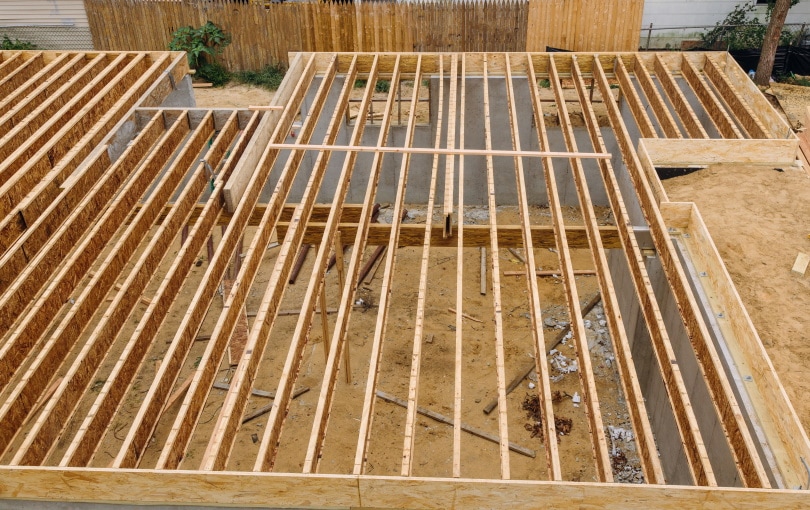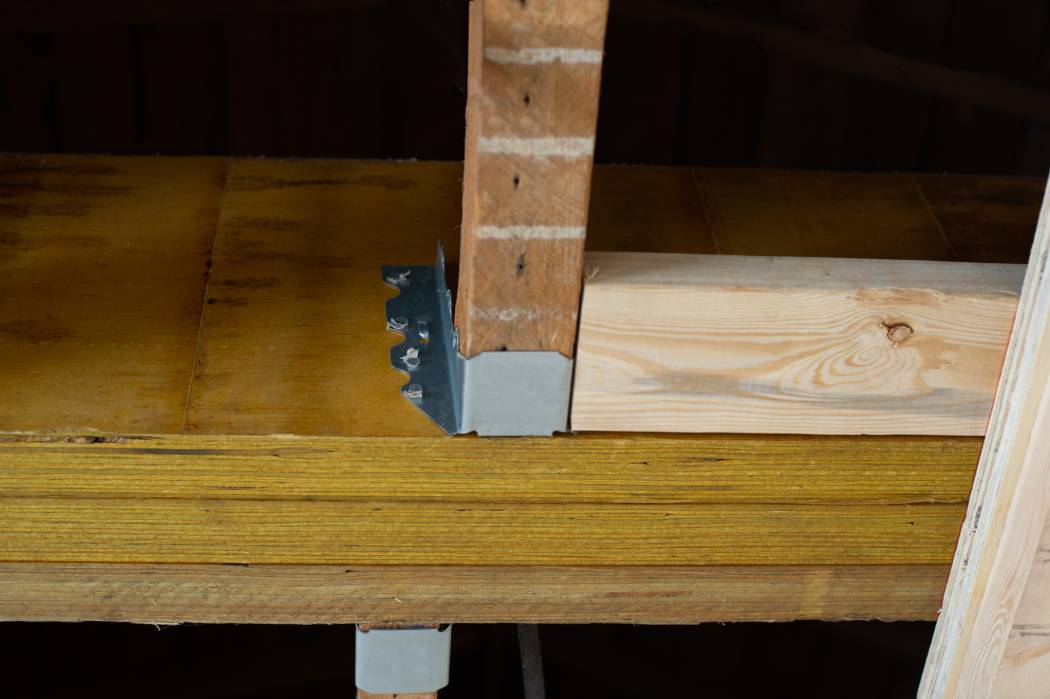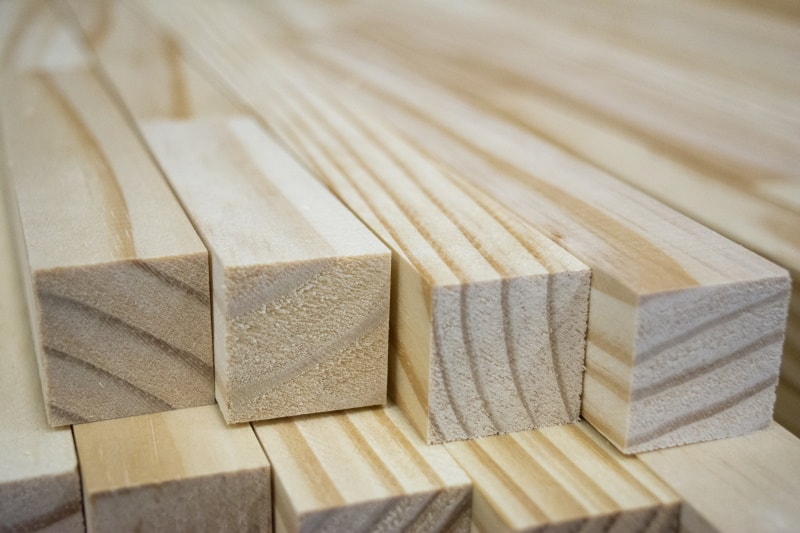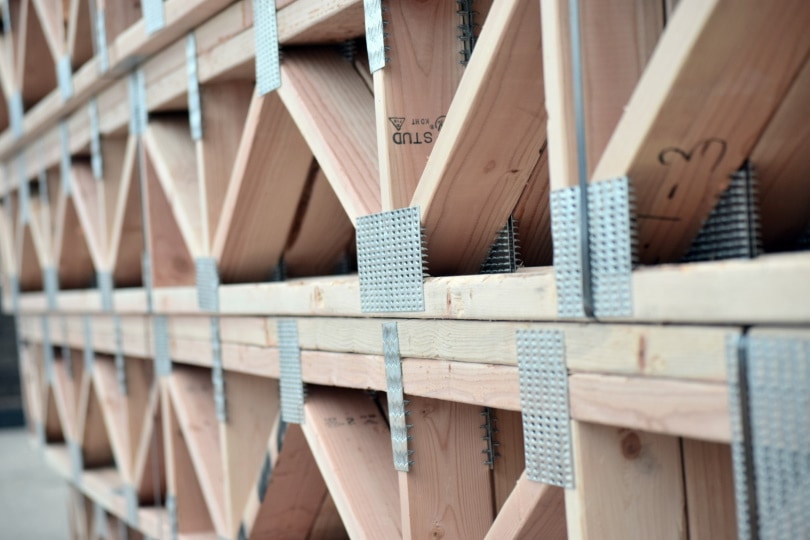5 Types of Floor Trusses and Joists (With Pictures)
-
Pete Ortiz
- Last updated:

Whenever we enter someone’s home, the first thing we usually notice is the furniture or the decor. Most people don’t pay attention to the home structure—the key that holds everything together. Floor trusses and joists are an essential part of any construction project, and it’s helpful to know their advantages and disadvantages and the types available. Most people divide them into three categories, but here are five types of floor trusses and joists.
The 5 Types of Floor Trusses and Joists
1. LVL Joists

| Price | $3–$12 per linear foot |
LVL Joists (Laminated Veneer Lumber) are engineered lumber joists that are very popular in construction. LVL joists are very durable, come in various shapes and sizes, and are affordable. Another great thing about LVL joists is that they are eco-friendly, which is why many people use them for construction projects. Still, since LVL Joists are made from veneer, they can be prone to warping, which can be inconvenient.
- Affordable
- Durable
- Come in various shapes and sizes
- Eco-friendly
- Can be prone to warping
2. Solid Lumber Joists

| Price | Varies depending on wood type |
Solid Lumber Joists are still popular, but not as much as they used to be. In the past, they were a must for construction work, but these days more people go for engineered wood products. These joists are not the best for the environment because companies must cut many trees to make the joists.
Solid lumber beams can be cheaper than engineered wood when it comes to the price, but the investment will not pay off in the long run. A good thing about solid lumber joists is that they are more fire-resistant than LVL Joists or I-Beams.
- Inexpensive
- Fire-resistant
- Not the best for the environment
- Do not pay off in the long run
- Limited span distance
3. I-Joists
| Price | $5–$9 per linear foot |
I-Joists are a manufactured product mostly made from OSB web or plywood material top and bottom flanges. They are lightweight and easy to work with, so people love to use them. They are affordable and environmentally friendly, and many I-Joists are produced with knockouts for plumbing which will save you time on drilling. A downside to using I-Joists is that they require a particular layout and design. Other disadvantages are that I-Joists are not as fire-resistant as other options on the market.
- Lightweight
- Easy to work with
- Has knockouts for plumbing
- Affordable
- Ecologically friendly
- Need particular layout and design
- Not as fire-resistant as some other options
Find a flooring specialist in your area, and get free, no-commitment estimates for your project.Consult a flooring expert

4. Steel Floor Joists

| Price | $1–$75 per linear foot |
These days, steel floor joists have become very popular since they are more long-lasting and durable than wood joist options. They are created to provide a better load-bearing system to support home structures. Because of that, they are more expensive than most other joist types, but since steel is stronger than wood, you can complete a project using steel joists quicker with less support.
Steel floor joists are resistant to fire and moisture, and they creak less when walking, which will make your home quieter. Since steel can always be reused, it is another eco-friendly option. They are perfect for basements and attic floors.
- Long-lasting
- Durable
- Strong
- Provide a better load-bearing system
- Resistant to fire and moisture
- They creak less when walking
- Eco-friendly
- Expensive
5. Open Web Floor Trusses

| Price | $5–$80 per linear foot |
Open Web Floor Trusses are a fantastic option for any home as they provide design freedom and a dependable structure. They are constructed with 2x4s on the bottom and top, with a “web” between them. The “web” is secured with metal plates for better support. They are durable and not prone to bowing or shrinking, making them the most expensive option.
- Provide design freedom and a dependable structure
- Durable
- Not prone to bowing and shrinking
- Expensive
- Can’t be easily trimmed
What Are Floor Trusses?
Floor trusses are floor framing materials that make your construction job or project much more manageable. They offer the required support while providing maximum structural efficiency. You can quickly install them and ensure that they will not shrink, and they leave a lot of space for plumbing and wiring, making the whole process uncomplicated.
What Are Floor Joists, and What Are They Commonly Made of?
Floor joists are horizontal parts of the flooring system that carry the weight of the home and support the structure. They can be made from wood, engineered wood, or steel, and each material has unique characteristics. Since joists are made to endure the load for an extended period, they must be durable. That’s why we recommend engineered wood joists or steel joists. They are usually more expensive, but well worth the price.

What Is the Difference Between Floor Trusses and Joists?
Floor trusses and joists are used to support weight and provide structural support. We use joists to support floors and ceilings, while trusses can have various uses. Trusses are commonly more expensive than joists, but joists are easier to work with. Regarding weight distribution, trusses allow a more stable distribution, making them more popular than joists. Both options can be a good choice depending on the kind of project you need them for.
What Size Should Floor Joists Be?
Floor joists come in many sizes, but they usually range from 2 x 8’ to 2 x 12’. Sometimes, they can also be 2 x 6’, although these sizes are not very common and are mostly seen in older homes.
Conclusion
Before you purchase and decide which floor trusses and joists to choose, make sure you know everything about them. Consider the price, the location, and the durability before making your final choice.
- See Also: How to Replace Floor Joists in 5 Simple Steps
- See Also: 17 Types of Wood and Lumber For Building (With Pictures)
Featured Image Credit: ungvar, Shutterstock
Contents



